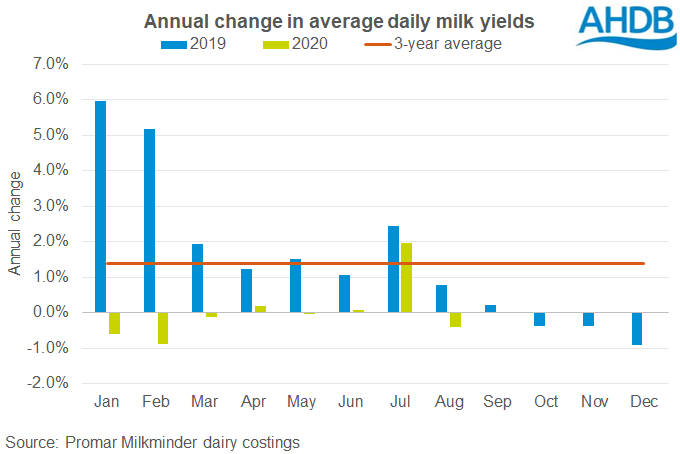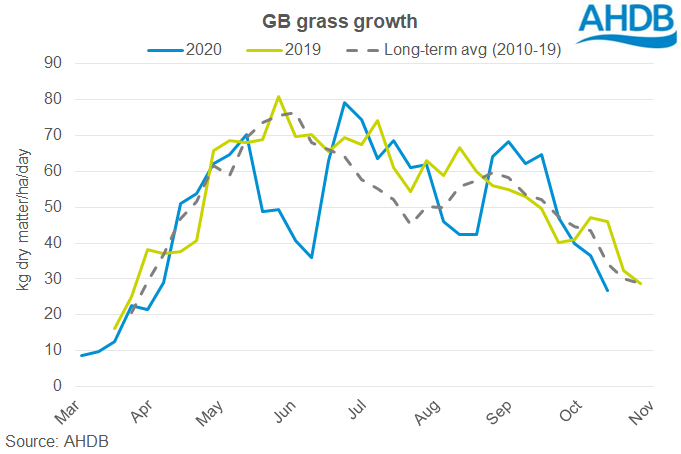Minimal growth in recorded milk yields this year
Thursday, 22 October 2020
By Felicity Rusk
Typically, we would expect to see milk yields to improve by around 1.4% per year. This is due to a combination of factors including genetic improvements and better nutrition. This year however has bucked this typical trend, with monthly year-on-year growth showing a very uneven pattern.

Yields were down on the year even before the pandemic hit in March. This is likely a reflection of the significant growth in yields at the start of last year. Many producers had to opt to supplement diets in the winter of 2018/19 with concentrates due to a forage shortage following the summer drought. This higher plane of nutrition supported yield growth. Yields in January and February 2019 were up by 6.0% and 5.2% on the year respectively.
With the majority of cows returning to a more forage based diet in the winter of 2019/20, it was unlikely that this level of growth was maintained.
We estimate that around a quarter of GB producers were asked to curb their milk production as a result of the first wave of the pandemic back in March. Many producers were also faced with other financial pressures, such a reduction to milk prices and A/B pricing systems. As such, many producers would not have ‘pushed’ yields as much as usual during these months. This is evident in the minimal growth in yields between March and June.
July of this year recorded substantial growth, increasing by 2% on the year, which was in line with when curbing measures were lifted. Yields then dropped back in August, a reflection of the grass growth and the weather conditions with a heatwave lowering milk production.

Looking ahead, grass growth at a national level for the season is some 3% below the long-term average. We have heard anecdotal reports that some regions are facing tighter forage supplies heading into winter, reflecting the dry periods throughout the growing season. Overall quality has been reported as good, although variable.
This suggests that there is the potential for yields to return to more ‘typical’ growth throughout the winter. However, producers with poorer quality silage or lower stocks may have to supplement diets with concentrate feeds. With feed costs considerably higher than last year, some producers may not choose to ‘push-on’ cows through nutritional means due to the financial constraints. This does assume that produces will not be asked to curb milk production during this second wave of the virus, which is already unlikely since production is not at its peak as it was during the first wave.
Sign up to receive the latest information from AHDB.
While AHDB seeks to ensure that the information contained on this webpage is accurate at the time of publication, no warranty is given in respect of the information and data provided. You are responsible for how you use the information. To the maximum extent permitted by law, AHDB accepts no liability for loss, damage or injury howsoever caused or suffered (including that caused by negligence) directly or indirectly in relation to the information or data provided in this publication.
All intellectual property rights in the information and data on this webpage belong to or are licensed by AHDB. You are authorised to use such information for your internal business purposes only and you must not provide this information to any other third parties, including further publication of the information, or for commercial gain in any way whatsoever without the prior written permission of AHDB for each third party disclosure, publication or commercial arrangement. For more information, please see our Terms of Use and Privacy Notice or contact the Director of Corporate Affairs at info@ahdb.org.uk © Agriculture and Horticulture Development Board. All rights reserved.

